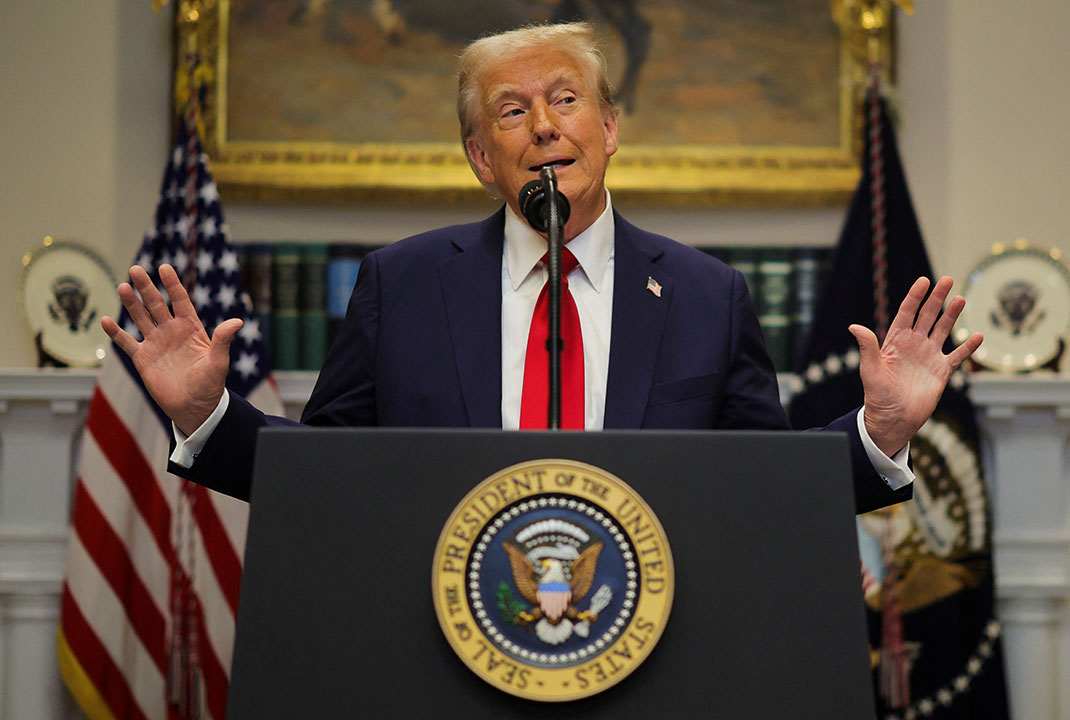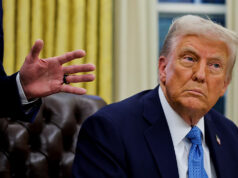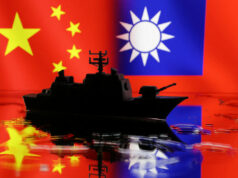
WASHINGTON/TOKYO – The United States and Japan struck a deal to lower the hefty tariffs President Donald Trump threatened to impose on goods from its Asian ally that included a $550 billion package of U.S.-bound investment and loans from Tokyo.
The agreement will bring immediate relief to Japan’s critical autos sector with existing tariffs cut to 15% from 25%, and proposed levies on other Japanese goods that were set to come in on August 1 also cut by the same amount.
Autos make up more than a quarter of all Japan’s exports to the United States.
“I just signed the largest TRADE DEAL in history with Japan,” Mr. Trump said on his Truth Social platform. “This is a very exciting time for the United States of America, and especially for the fact that we will continue to always have a great relationship with the Country of Japan,” he added.
Mr. Ishiba, who local media reported will soon resign after a bruising election defeat on Sunday, hailed the deal as “the lowest figure among countries that have a trade surplus with the U.S.”
The U.S. investment package includes loans and guarantees from Japanese government-affiliated institutions of up to $550 billion to enable Japanese firms “to build resilient supply chains in key sectors like pharmaceuticals and semiconductors,” Mr. Ishiba said.
Japan will also increase purchases of agricultural products such as U.S. rice, a Mr. Trump administration official said. Mr. Ishiba said the share of U.S. rice imports may increase under its existing framework but that the agreement would “not sacrifice Japanese agriculture.”
The announcement ignited a rally in Japanese stocks, with the benchmark Nikkei climbing 2.6% to its highest in a year. Shares of automakers surged in particular, with Toyota up more than 11%, and Honda and Nissan both up more than 8%.
The exuberance extended to shares of South Korean carmakers as well, as the Japan deal stoked optimism that South Korea could strike a comparable deal. The yen firmed slightly against the dollar, while European and U.S. equity index futures edged upward.
But U.S. automakers signaled their unhappiness with the deal, raising concerns about a trade regime that could cut tariffs on auto imports from Japan to 15% while leaving tariffs on imports from Canada and Mexico at 25%.
“Any deal that charges a lower tariff for Japanese imports with virtually no U.S. content than the tariff imposed on North American-built vehicles with high U.S. content is a bad deal for U.S. industry and U.S. auto workers,” said Matt Blunt, who heads the American Automotive Policy Council which represents General Motors GM.N Ford F.N and Chrysler parent Stellantis.
‘MISSION COMPLETE’
Autos are a huge part of U.S.-Japan trade, but almost all of it is one way to the U.S. from Japan, a fact that has long irked Trump. In 2024, the U.S. imported more than $55 billion of vehicles and automotive parts while just over $2 billion were sold into the Japanese market from the U.S.
Two-way trade between the two countries totaled nearly $230 billion in 2024, with Japan running a trade surplus of nearly $70 billion. Japan is the fifth-largest U.S. trading partner in goods, U.S. Census Bureau data show.
Trump’s announcement followed a meeting with Japan’s top tariff negotiator, Ryosei Akazawa, at the White House on Tuesday.
“#Mission Complete,” Mr. Akazawa wrote on X, later saying the deal did not include Japanese exports of steel and aluminum that are subject to a 50% tariff, nor any agreement on defense budgets.
The deal was “a better outcome” for Japan than it potentially could have been, given Trump’s earlier unilateral tariff threats, said Kristina Clifton, a senior economist at the Commonwealth Bank of Australia in Sydney.
Kazutaka Maeda, an economist at Meiji Yasuda Research Institute, said that “with the 15% tariff rate, I expect the Japanese economy to avoid recession.”
Japan is the largest investor in the United States. Together with pension giant GPIF and Japanese insurers, the country has about $2 trillion invested in U.S. markets.
Besides that, Bank of Japan data shows direct Japanese investment in the United States was $1.2 trillion at the end of 2024, and Japanese direct investment flows amounted to $137 billion in North America last year.
Speaking later at the White House, Mr. Trump also expressed fresh optimism that Japan would form a joint venture with Washington to support a gas pipeline in Alaska long sought by his administration.
“We concluded the one deal … and now we’re going to conclude another one because they’re forming a joint venture with us at, in Alaska, as you know, for the LNG,” Mr. Trump told lawmakers at the White House. “They’re all set to make that deal now.”
Trump aides are feverishly working to close trade deals ahead of an August 1 deadline that Trump has repeatedly pushed back under pressure from markets and intense lobbying by industry. By that date, countries are set to face steep new tariffs beyond those Trump has already imposed since taking office in January.
Mr. Trump has announced framework agreements with Britain, Vietnam, Indonesia and paused a tit-for-tat tariff battle with China, though details are still to be worked out with all of those countries.
At the White House, Mr. Trump said negotiators from the European Union would be in Washington on Wednesday. – Reuters



